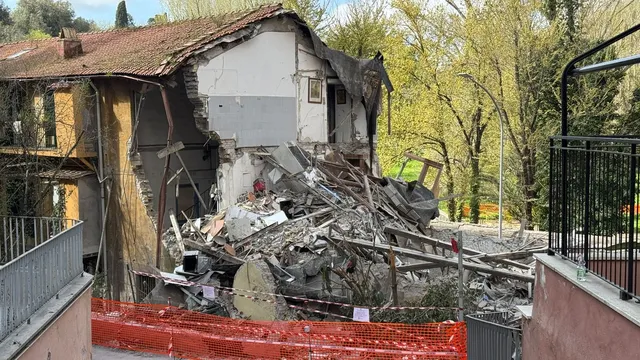
Scottish tourist suffers severe burns from gas explosion in Rome
2025-03-24 12:16- A gas explosion in Rome on March 23, 2025, led to the collapse of a three-storey building, resulting in the serious injury of a Scottish tourist.
- Grant Paterson was rescued from the rubble and is receiving treatment for severe burns at Sant'Eugenio Hospital.
- Local authorities are investigating the cause of the explosion and have emphasized the need for improved safety measures to prevent such incidents in the future.
Express your sentiment!
Insights
In Italy, a tragic incident occurred on March 23, 2025, when a gas explosion destroyed a B&B apartment in Rome, resulting in serious injuries for a British tourist. Grant Paterson, 54, from East Kilbride, was rescued from the debris early Sunday morning. Firefighters and rescue workers rushed to the scene to find Paterson among the rubble of the three-storey building that had collapsed due to the explosion. Local authorities, including Roberto Gualtieri, the Mayor of Rome, were quick to respond and initiated an investigation into the cause of the explosion. As emergency personnel worked diligently to assist those affected, Paterson was transported to Sant'Eugenio Hospital, where he is currently being treated for extensive burns. Reports indicate that he suffered burns over approximately 75% of his body, placing him in a critical condition. The immediate concern for local officials was to secure the area, leading to the evacuation of surrounding buildings to prevent further casualties and ensure public safety. Witnesses described the powerful blast as shocking, and many locals expressed their concern for those injured in this unforeseen disaster. Grant Paterson had recently arrived in Rome on a solo trip, sharing posts on social media that highlighted his excitement about the beautiful accommodations and his expectations for a pleasant holiday. However, his vacation took a disastrous turn as the gas explosion occurred, altering what was supposed to be an enjoyable experience into a nightmare. Local news outlets have stated that Paterson was conscious when pulled from the ruins, indicating a glimmer of hope amidst the dire circumstances. As investigators work to determine the exact cause of the explosion, authorities are focusing on safety measures going forward. The potential for such incidents raises questions about infrastructure safety in tourist-heavy areas. Mayor Gualtieri has emphasized the need for a thorough evaluation to prevent future tragedies like this, which highlights the risks involved in gas utilization within residential or commercial settings. Additionally, it has sparked conversations on emergency preparedness especially in urban settings with dense populations of tourists who may not be familiar with local safety protocols. In summary, Paterson's accident has not only led to a personal tragedy but also poses wider implications for public safety and regulatory guidelines regarding gas installations and inspections.
Contexts
Gas explosions in residential areas present a grave threat to safety and property, often resulting in catastrophic consequences. These explosions can occur due to various factors such as faulty gas appliances, improper installation, or gas leaks that go unnoticed. When gas accumulates in enclosed spaces, it creates a highly explosive environment, particularly when ignited by an open flame or electrical spark. The impact of such explosions is profound, not only causing physical harm and loss of life but also leading to substantial economic costs associated with property damage, emergency response efforts, and long-term recovery for affected communities. The aftermath of a gas explosion typically involves significant disruption to the lives of those affected. Survivors often face immediate challenges such as displacement from their homes, psychological trauma, and financial instability. Recovery efforts can be lengthy, with communities spending months or even years rebuilding infrastructure and assisting victims. In addition to the physical destruction caused by the blast, there are longer-term implications for mental health and community cohesion, as individuals grapple with the loss and the lingering fear of similar incidents occurring in the future. Preventative measures play a crucial role in mitigating the risk of gas explosions. Authorities and stakeholders can implement various strategies, including regular inspections of gas lines and appliances, public education campaigns about the dangers of gas leaks, and the promotion of safer alternatives to traditional gas usage. Additionally, advancements in technology, such as smart gas detection systems, can alert residents to leaks before they reach hazardous levels. Community engagement and awareness are essential to ensuring that residents understand the signs of a potential gas leak and know how to respond in case of an emergency. In conclusion, the impact of gas explosions in residential areas is a multifaceted issue requiring a comprehensive approach to prevention, response, and recovery. Through collaboration between government agencies, local communities, and individuals, it is possible to reduce the frequency of these tragic events and enhance the safety of residential environments. Ongoing research and investment in safety technologies, coupled with community education and engagement, are vital steps toward a future where the risks associated with gas usage are significantly minimized.